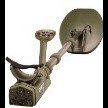Metal Detector Engineer's Who Led The Way Dave Johnson & Bruce Candy
-
Similar Content
-
- 42 replies
- 3,567 views
-
- 23 replies
- 3,680 views
-
- 37 replies
- 5,992 views
-
- 9 replies
- 763 views
-
- 18 replies
- 2,531 views
-
- 4 replies
- 939 views
-
-









Recommended Posts
Create an account or sign in to comment
You need to be a member in order to leave a comment
Create an account
Sign up for a new account in our community. It's easy!
Register a new accountSign in
Already have an account? Sign in here.
Sign In Now